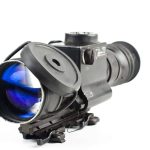Throttle body synchronization can significantly enhance the performance of your BMW R nineT Racer. This intricate process aligns the airflow between the throttle bodies, resulting in smoother acceleration and improved engine response. By following this step-by-step guide, you'll gain hands-on skills and confidence in performing this essential maintenance task. Whether you're an experienced mechanic or a DIY enthusiast, effectively mastering throttle body synchronization will elevate your riding experience. Dive in, and let's get started on optimizing your motorcycle's performance!
Understanding Throttle Body Synchronization
Throttle Body Synchronization is crucial for maintaining optimal engine performance in motorcycles like the BMW R nineT Racer. This process ensures that all throttle bodies open simultaneously, allowing the engine to run smoothly and efficiently. Proper synchronization minimizes vibrations and enhances fuel efficiency, contributing to a more enjoyable riding experience.
In parallel : Create your unique look with our custom sticker kits
In the BMW R nineT Racer, the throttle body components include a series of valves that control the air-fuel mixture entering the engine. Each cylinder has its own throttle body, and synchronization aligns these components so that the engine operates harmoniously. This alignment is vital for balanced power delivery and reducing wear on engine parts.
Signs of improper Throttle Body Synchronization include uneven idling, decreased fuel economy, and reduced overall performance. Riders might also notice increased engine vibrations or a lack of responsiveness when accelerating. These symptoms can lead to long-term engine damage if not addressed promptly.
Also to discover : Mastering Engine Heat Control: Tips for Enhancing Your Ducati Panigale 1199”s Performance
Regular maintenance checks, including throttle body synchronization, ensure the BMW R nineT Racer maintains its peak performance. By keeping the engine components in sync, riders can enjoy a smoother, more powerful ride, ultimately extending the life of their motorcycle. Proper synchronization is a key factor in achieving the best possible performance from your bike.
Tools and Preparation for Synchronization
Before diving into throttle body synchronization, it's essential to gather the right tools and prepare adequately. This ensures a smooth and efficient process, minimizing the risk of errors and maximizing performance outcomes.
Essential Tools
To achieve precise synchronization, you'll need specific tools. A vacuum gauge or a manometer is crucial for measuring the vacuum pressure in each throttle body. Additionally, a set of screwdrivers and wrenches will be necessary for adjustments. These tools allow for fine-tuning, ensuring each throttle body operates in harmony with the others.
Safety Precautions
Safety is paramount. Ensure you're equipped with protective gloves and safety goggles to prevent injuries. It's also wise to have a fire extinguisher nearby, as working with engines can pose fire risks. Always work in a well-ventilated area to avoid inhaling harmful fumes.
Preparation Steps
Begin by parking the motorcycle on a stable surface. Ensure the engine is cool to the touch to avoid burns. Clear the workspace of any clutter to allow easy access to the throttle bodies. Disconnect the battery to prevent accidental starts. These preparation steps set the stage for effective synchronization, enhancing both safety and precision.
Step-by-Step Throttle Body Synchronization Process
Mastering the synchronization techniques for your BMW R nineT Racer is essential for maintaining its optimal performance. This guide provides a detailed walkthrough of the synchronization process, ensuring precision and efficiency.
Initial Setup
Begin by ensuring your motorcycle is on a stable surface and the engine is cool. Disconnect the battery to avoid accidental starts. Attach the vacuum gauge or manometer to each throttle body. This setup is crucial for measuring the vacuum pressure accurately, which is the first step in the adjustment methods. Ensure all connections are secure to prevent errors during the process.
Synchronization Procedure
Start the engine and let it idle. Observe the readings on your vacuum gauge or manometer. If the readings differ significantly, adjustments are necessary. Use a screwdriver to fine-tune the throttle body screws, aligning the vacuum pressure across all cylinders. This precise step-by-step guide ensures each throttle body operates in unison, enhancing engine performance.
Final Adjustments
Once synchronization is achieved, make final adjustments to ensure optimal performance. Recheck the vacuum pressure and make minor tweaks if needed. Reconnect the battery and test ride your motorcycle to confirm smooth operation. These final adjustments are crucial for maintaining the balance and efficiency of your engine, ensuring a powerful and enjoyable ride.
Troubleshooting Common Issues
Navigating the intricacies of throttle body synchronization can sometimes lead to performance problems. Identifying these issues early is crucial for maintaining your motorcycle's optimal functionality.
Identifying Common Issues
During synchronization, you might encounter several common issues. If the engine idles unevenly or the vacuum readings fluctuate significantly, it indicates misalignment. Additionally, persistent vibrations or a sluggish throttle response are signs of synchronization problems. These issues can affect overall performance, making it essential to address them promptly.
Solutions and Tips
Resolving synchronization problems often requires patience and precision. Start by rechecking the vacuum gauge connections to ensure they're secure. If discrepancies persist, make small adjustments to the throttle body screws, observing changes in real-time. Regularly clean the throttle bodies to prevent dirt buildup, which can hinder synchronization. These solutions can often rectify minor issues without needing professional intervention.
When to Seek Professional Help
While many synchronization problems can be tackled with DIY solutions, some situations necessitate expert assistance. If performance problems persist despite multiple adjustments, or if you're uncertain about the process, seeking professional help is advisable. Professionals have the tools and expertise to diagnose and resolve complex issues, ensuring your motorcycle operates at its best.
Additional Resources and Visual Aids
For those who prefer visual learning, video tutorials can be an invaluable resource when tackling throttle body synchronization. These tutorials provide step-by-step guidance, allowing you to follow along with real-time demonstrations. Many experienced mechanics and enthusiasts share their expertise online, offering insights that can enhance your understanding of the process.
Diagrams are another helpful tool, especially for illustrating the synchronization steps and setups. Visual representations can clarify complex procedures, making it easier to identify each component and its function. Diagrams often highlight the precise locations for adjustments, ensuring accuracy and efficiency.
To deepen your knowledge, consider exploring various maintenance resources available for the BMW R nineT Racer. These resources often include detailed guides, technical manuals, and expert advice, providing comprehensive information on maintaining peak performance. While direct links are not provided here, a simple search can yield numerous options, from official BMW manuals to community forums where fellow riders share their experiences.
By utilizing these additional resources, you can gain a more thorough understanding of throttle body synchronization, enhancing both your confidence and skill in maintaining your motorcycle.






